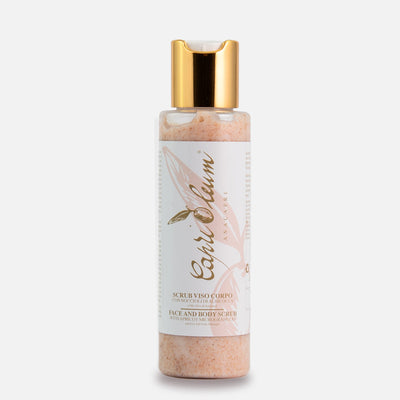Italian Olive Oil: Benefits, Regions, and Versatile Uses
Italian olive oil is one of the most appreciated gastronomic excellences worldwide, a symbol of tradition, quality, and flavor. It is not only an essential ingredient in Mediterranean cuisine but also a health ally, thanks to its numerous beneficial properties. In this article, we will explore the principles of Italian olive oil, its benefits, and the regions that produce the best oils, making it an indispensable product in everyday life.
What is Italian Olive Oil?
Italian olive oil is a vegetable oil extracted from the pressing of olives, the fruit native to Mediterranean regions. Italy has a long tradition of olive oil production, and it is in this country that some of the most prized and renowned varieties are cultivated. The characteristics of Italian olive oil depend on the quality of the olives, the extraction techniques, and the care with which producers respect traditional methods.
The Principles of Italian Olive Oil
Olive oil is primarily composed of fatty acids, polyphenols, vitamins, and antioxidants. Each element plays a crucial role both in flavor and in health benefits.
-
Monounsaturated fatty acids: Italian olive oil is rich in monounsaturated fatty acids, mainly oleic acid. These fats are considered healthy because they help reduce LDL cholesterol (the "bad" cholesterol) levels in the blood, promoting good cardiovascular health.
-
Polyphenols: These compounds have powerful antioxidant actions, protecting the body from the damage caused by free radicals. Polyphenols can help reduce inflammation and protect cells from aging.
-
Vitamins: Olive oil is also a good source of vitamins A, D, E, and K, which are essential for eye health, bone health, and skin care.
Benefits of Italian Olive Oil
-
Promotes cardiovascular health: Thanks to its monounsaturated fatty acids and polyphenols, olive oil is known for improving heart health. Regular consumption can help reduce the risk of heart disease by lowering blood pressure and cholesterol levels.
-
Supports digestion: Olive oil has digestive properties, as it stimulates bile production, aiding digestion. Additionally, it has soothing effects on the intestinal mucosa, helping to prevent gastrointestinal disorders.
-
Supports skin health: Thanks to its vitamins and antioxidants, olive oil is a natural ally for skin care. It can be used both as an ingredient in cosmetic treatments and directly on the skin to nourish it and combat signs of aging, such as wrinkles and dark spots.
-
Anti-inflammatory effects: The polyphenols in olive oil have strong anti-inflammatory properties. Regular consumption of olive oil can help reduce chronic inflammatory processes, which are the basis of many diseases like arthritis and other autoimmune conditions.
-
Antioxidant action: The antioxidants in olive oil protect the body from oxidative stress, a phenomenon that accelerates cellular aging and can contribute to the development of chronic diseases.
The Best Olive Oil Regions in Italy
Italy’s olive oil production is as varied as its landscape, with each region offering unique qualities that contribute to the diverse world of Italian olive oils. Some regions, however, are particularly renowned for producing some of the highest quality oils in the country. Let's take a closer look at three of these regions: Sicily, Liguria, and Puglia.
1. Sicily: A Rich Tradition of Olive Oil
Sicily, the largest island in the Mediterranean, has been producing olive oil for centuries. Its climate and fertile soil create ideal conditions for olive cultivation. The island is known for its DOP (Protected Designation of Origin) certified oils, such as Val di Mazara and Monti Iblei.
-
Flavor Profile: Sicilian olive oils are often robust, with a rich, full-bodied taste. They can range from slightly spicy and bitter to mild and fruity, depending on the variety of olive used.
-
Notable Varieties: The Nocellara del Belice is one of Sicily’s most famous olive varieties, known for its fruity and slightly nutty flavor. The Cerasuola is another Sicilian variety, recognized for its balanced flavor and mild bitterness.
Sicilian olive oils are widely appreciated for their ability to enhance the flavors of Mediterranean dishes, including seafood, pasta, and grilled vegetables.
2. Liguria: The Region of Light and Fruity Oils
Liguria, located along the northwestern coast of Italy, is known for producing light and fruity olive oils, often prized for their delicate taste and elegance. The climate here, with its mild temperatures and proximity to the sea, makes it ideal for olive cultivation, although the region produces fewer olives compared to southern Italy.
-
Flavor Profile: Ligurian olive oils are often characterized by a lighter, milder taste, with notes of fresh grass and herbs. They tend to be less bitter and pungent, making them perfect for drizzling over fresh salads or fish dishes.
-
Notable Varieties: The Taggiasca olive is the most famous variety from Liguria, renowned for its fruity, slightly sweet flavor with a mild bitterness.
Due to their lighter flavor profile, Ligurian olive oils are often used in dishes where a more subtle olive oil flavor is preferred, such as in pesto (a traditional Ligurian sauce), on focaccia, or in light vegetable dishes.
3. Puglia: The Heart of Olive Oil Production
Puglia, the “heel” of Italy’s boot, is the largest producer of olive oil in the country and one of the world’s top producers. With its warm, sunny climate and vast expanses of olive groves, Puglia is home to some of Italy’s most renowned olive oils, particularly those produced in areas like Salento and Gargano.
-
Flavor Profile: Olive oils from Puglia tend to be robust, with a strong, grassy flavor and a noticeable peppery finish. They can also be slightly bitter, making them ideal for rich, hearty dishes.
-
Notable Varieties: The Coratina is one of Puglia’s most famous varieties, known for its bold flavor and intense green color. The Ogliarola and Peranzana olives are also prominent, offering a more balanced, fruity taste.
Puglian olive oils are perfect for pairing with local dishes such as pasta with tomato sauce, grilled meats, and traditional Puglian breads. They also work beautifully in dips and dressings, adding depth and intensity.
Conclusion
Italian olive oil is not just a delicious condiment but a natural resource with numerous beneficial properties. From the rich, full-bodied oils of Sicily to the delicate, fruity oils of Liguria and the robust, peppery oils of Puglia, Italy offers a wide range of olive oil profiles that cater to all tastes and culinary needs. Investing in high-quality extra virgin Italian olive oil from these renowned regions is not only a culinary choice but also a step toward a healthier and more natural lifestyle. Whether used in cooking or as a natural remedy, Italian olive oil deserves a place of honor in your daily routine.
























Leave a comment